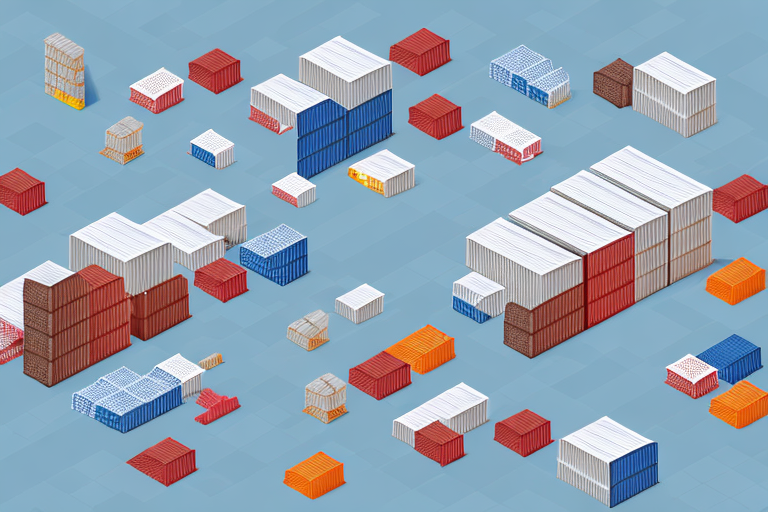Understanding Outbound Logistics: What It Is and How It Works
Outbound logistics refers to the process of delivering finished goods to customers. It is a critical aspect of the supply chain management process as it involves transporting goods from the manufacturing facility to the customer. In this article, we will examine:
- The importance of outbound logistics
- The key components that make up this process
- The impact of technology
- Common challenges faced
- Best practices for optimizing outbound logistics operations
- The role of outsourcing in outbound logistics
- Future trends and predictions
- Successful case studies
- Important metrics to track for measuring success
The Importance of Outbound Logistics in Supply Chain Management
Outbound logistics plays a key role in supply chain management as it is the final step in the process of delivering finished goods to customers. It involves coordinating the delivery process from the manufacturer to the customer, ensuring that products are delivered promptly and in good condition. Effective outbound logistics management requires collaboration between stakeholders, including manufacturers, transportation providers, and customers.
Furthermore, outbound logistics can significantly impact customer satisfaction and loyalty. A smooth and efficient delivery process can enhance the overall customer experience, while delays or damaged products can lead to dissatisfaction and negative reviews. Therefore, companies must prioritize outbound logistics management to ensure that they meet customer expectations and maintain a positive reputation in the market.
Key Components of Outbound Logistics: Transportation, Warehousing, and Order Fulfillment
Three key components make up the outbound logistics process:
- Transportation: Involves the movement of goods from the manufacturing facility to the customer, often using trucks, ships, trains, or airplanes.
- Warehousing: Involves storing goods in a facility until they are ready to be shipped to the customer.
- Order Fulfillment: Involves assembling, packaging, and shipping orders to customers in a timely and cost-effective manner.
Effective outbound logistics management requires careful coordination of these components. Transportation costs can be minimized by optimizing routes and modes of transportation, while warehousing costs can be reduced by implementing efficient inventory management systems. Order fulfillment can be streamlined by using technology such as automated picking and packing systems and maintaining accurate inventory records.
In addition to these components, outbound logistics also involves managing customer relationships and ensuring customer satisfaction. This includes providing accurate and timely information about order status and delivery, as well as handling returns and exchanges efficiently. Effective communication with customers is essential to building long-term relationships and maintaining a positive reputation in the marketplace.
How Technology is Revolutionizing Outbound Logistics
The use of technology in outbound logistics is transforming the way goods are delivered to customers. Technology solutions such as transportation management systems (TMS), warehouse management systems (WMS), and order management systems (OMS) are helping companies optimize their logistics operations, improve visibility into their supply chains, and reduce costs. For example, TMS solutions can help businesses optimize their transportation routes, reduce transportation costs, and improve customer service by providing real-time tracking of shipments.
In addition to TMS, WMS, and OMS, other technological advancements are changing the outbound logistics landscape. One such technology is the use of drones for last-mile delivery, reducing delivery times and costs. Another technology gaining popularity is the Internet of Things (IoT), which allows for real-time tracking of shipments and inventory levels. This technology can help companies better manage their inventory and reduce the risk of stockouts or overstocking. Overall, technology in outbound logistics is helping companies stay competitive in a rapidly changing market.
Common Challenges Faced in Outbound Logistics and How to Overcome Them
Common challenges in outbound logistics include delays in transportation, inventory management issues, and order accuracy problems. To overcome these challenges, companies can:
- Improve communication with transportation providers
- Implement just-in-time (JIT) inventory management practices to minimize waste and reduce costs
- Use barcode scanning and other technologies to ensure order accuracy
Another common challenge is the lack of visibility and tracking of shipments. This can lead to delays, lost packages, and dissatisfied customers. To address this challenge, companies can invest in transportation management systems (TMS) that provide real-time tracking and visibility of shipments. Additionally, companies can work with their transportation providers to establish clear communication channels and set expectations for tracking and reporting.
Best Practices for Optimizing Outbound Logistics Operations
Best practices for optimizing outbound logistics operations include:
- Improving collaboration between stakeholders
- Implementing technology solutions
- Monitoring key performance indicators (KPIs)
- Measuring and analyzing data to identify opportunities for improvement
Companies can also implement lean principles to reduce waste and improve efficiency in their logistics operations. It is essential to establish clear communication channels with customers and suppliers to ensure accurate and prompt order fulfillment. Additionally, companies can consider outsourcing certain logistics functions to third-party providers, such as transportation or warehousing, to reduce costs and improve efficiency.
The Role of Outsourcing in Outbound Logistics
Outsourcing can be an effective strategy for managing outbound logistics. By outsourcing logistics operations to third-party logistics (3PL) providers, companies can benefit from their expertise, resources, and experience. 3PL providers can provide customized logistics solutions at a lower cost, improve order accuracy, and reduce transportation costs by leveraging their transportation networks.
Moreover, outsourcing outbound logistics can help companies focus on their core competencies. By delegating logistics operations to 3PL providers, companies can free up their resources and concentrate on their core business activities. This can lead to increased efficiency, productivity, and profitability.
However, outsourcing outbound logistics may have potential drawbacks. Companies may lose control over their logistics operations and face communication and coordination challenges with their 3PL providers. Additionally, outsourcing may lead to a loss of knowledge and expertise within the company, which can be detrimental in the long run.
The Future of Outbound Logistics: Trends and Predictions
The future of outbound logistics is expected to be driven by several trends, including the use of autonomous vehicles, the Internet of Things (IoT), and artificial intelligence (AI). These technologies will enable companies to optimize their transportation networks, improve supply chain visibility, and reduce costs. Additionally, there is a growing focus on sustainability in logistics operations, leading to the adoption of eco-friendly transportation methods and practices.
Another trend expected to shape the future of outbound logistics is the increasing demand for same-day and next-day delivery. With the rise of e-commerce, customers are expecting faster delivery times, putting pressure on logistics companies to improve their last-mile delivery capabilities. This has led to the development of new delivery models, such as crowdsourced delivery and drone delivery, which are expected to become more prevalent in the coming years.
Case Studies: Successful Implementations of Outbound Logistics Strategies
Several companies have successfully implemented outbound logistics strategies to improve efficiency and reduce costs. For example:
- Amazon: Implemented advanced logistics systems that enable them to fulfill orders quickly and efficiently.
- Zara: Implemented a fast fashion model that relies on a highly efficient logistics system to rapidly deliver products to customers.
- Walmart: Implemented a cross-docking system, which allows products to be quickly sorted and shipped to their final destination without the need for long-term storage. This has enabled Walmart to reduce inventory costs and improve delivery times, ultimately leading to increased customer satisfaction.
Measuring the Success of Your Outbound Logistics Strategy: Metrics and KPIs to Track
To measure the success of outbound logistics strategies, companies can track several key performance indicators (KPIs) such as:
- On-time delivery rates
- Order accuracy
- Transportation costs
- Inventory turnover
By tracking these metrics, companies can identify opportunities for improvement, optimize their logistics operations, and ensure that they are delivering high-quality products to customers cost-effectively and efficiently.
Overall, outbound logistics is an essential component of the supply chain management process. By understanding the importance of outbound logistics, the key components of the process, the impact of technology, common challenges, best practices, outsourcing, future trends, successful case studies, and important metrics to track, businesses can effectively manage their logistics operations and improve customer satisfaction.
One of the emerging trends in outbound logistics is the use of automation and robotics. With advancements in technology, companies can automate their logistics operations, leading to increased efficiency, reduced costs, and improved accuracy. For example, automated warehouses can use robots to pick and pack products, while autonomous vehicles can be used for transportation. By adopting these technologies, companies can stay competitive and meet the growing demands of customers for faster and more reliable delivery.






















